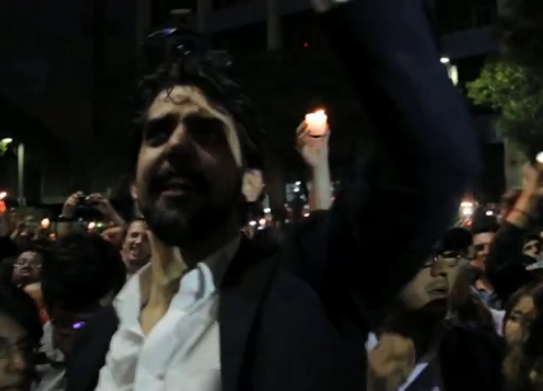Mexican students who organized massive protests against the country’s biggest broadcaster may not have seen their favored candidate win, but they did spotlight how online media can seize the political agenda in a country with little media competition.
Using the hashtag #YoSoy132, these students created YouTube videos and social media tools to rally against what they saw as the potential return of an autocratic, corrupt regime that controlled the country for much of the 20th century. Mexican bloggers and political websites emerged in opposition to Enrique Pena Nieto, the presidential candidate for the Institutional Revolutionary Party, known as the PRI. The heated controversy over the election turned into the perfect launchpad for new online media outlets like Animal Politico, Sinembargo.com and ADN Politico.
Further inciting the students’ outrage with the media was a report by The Guardian that published internal documents showing payment to Televisa from the PRI party for favorable election coverage.
The Voices Behind the #YoSoy132 Movement in Mexico from Storyhunter on Vimeo.
The Storyhunter video above shows vivid footage of protests against Televisa, and profiles Antonio Atollini, a student at Mexico’s ITAM university who is emerging as a potential leader of the movement (although he and other movement “spokespeople” say #YoSoy132 has no leaders nor political affiliation).
The video below tells the story of how the #YoSoy132 hashtag, or #IAm132, was born. Rodrigo Serrano and 130 schoolmates at the Iberoamericana University in Mexico City, created a YouTube video denouncing accusations that they were thugs and paid-off cheerleaders after protesting a presidential debate at their school on May 11. Serrano’s video now has over 1 million views on YouTube, and students from other schools began pronouncing their support for the 131 students on Twitter.
Many of the students we interviewed explained that Nieto winning is a function of most Mexicans not having access to the Internet. Our videos, for example, were published on Yahoo Mexico and never broadcast on TV.
But as more and more people in Mexico get their news from online outlets and student protests tarnish the credibility of traditional broadcasters, the value of Televisa’s stronghold on TV airwaves may begin to depreciate. With more options emerging to get news on the Internet, and broadband access projected to expand across the world (although not as fast as these students would hope), the future is on their side.
The Tweet That Ignited the Mexican Spring from Storyhunter on Vimeo.
Alexander Ragir is a co-founder of Storyhunter, a premier global network of video journalists. With Storyhunter, he helps oversee the production of web documentaries from all over the world. A former foreign correspondent for Bloomberg News in Rio de Janeiro, he frequently contributed to Bloomberg Markets and Businessweek magazines. He’s worked for the Associated Press in Sao Paulo and produced video documentaries for CurrentTV. Twitter: @storyhunter or @alexragir
 This piece is a cross-post from Storyhunter, a network of professional video journalists that produce online documentaries from all over the world, and was published in Spanish on Yahoo Mexico. Follow @storyhunter for Twitter updates, here on Facebook or go to www.storyhunter.tv
This piece is a cross-post from Storyhunter, a network of professional video journalists that produce online documentaries from all over the world, and was published in Spanish on Yahoo Mexico. Follow @storyhunter for Twitter updates, here on Facebook or go to www.storyhunter.tv

